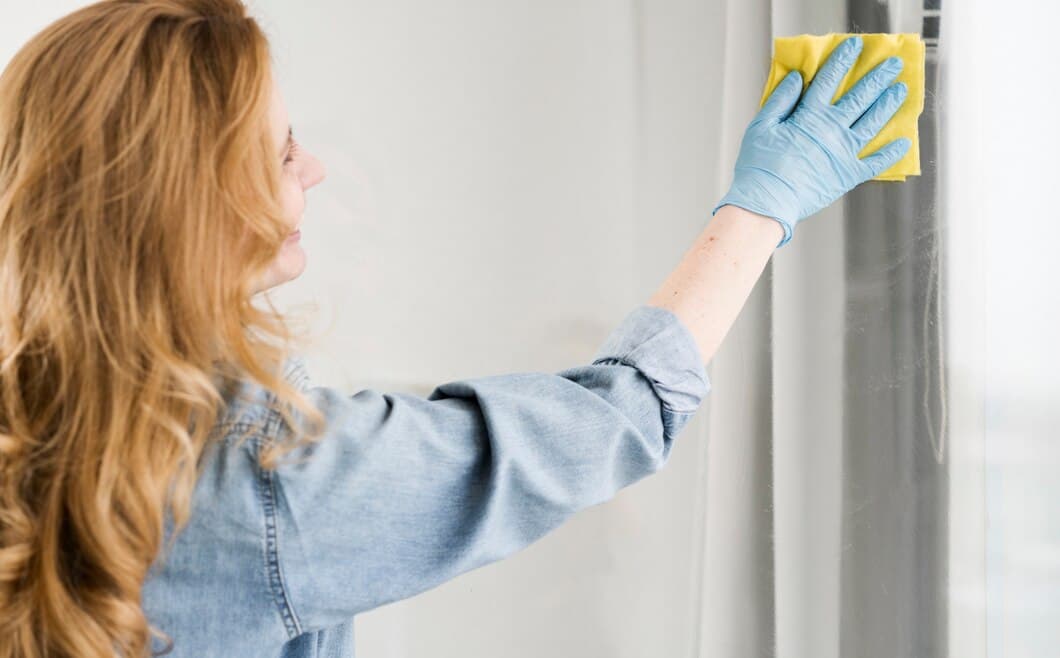

This article provides a comprehensive guide on how to clean a computer mouse. Cleaning a mouse regularly helps maintain its functionality and longevity. Different types of mice require different cleaning methods, and this article covers the specific steps for cleaning optical, laser, and trackball mice.
To clean an optical or laser mouse, turn it upside down and shake it to remove any loose debris. Use a cotton swab dipped in rubbing alcohol to gently wipe the sensor lens. For trackball mice, remove the ball and clean it with soap and water. Use a cotton swab dipped in rubbing alcohol to clean the sensors inside the mouse.
Before starting to clean your computer mouse, gather the necessary supplies. You'll need a soft, lint-free cloth, a cotton swab or soft brush, and isopropyl alcohol (70% or higher). If your mouse has any stubborn grime or stains, you may also want to use a mild dish soap and water solution.
Once you have all of your supplies, you can start cleaning your mouse. Begin by unplugging the mouse from your computer. Then, use the soft, lint-free cloth to wipe down the exterior of the mouse, including the buttons, scroll wheel, and any other surfaces.
When cleaning the mouse, first turn off the computer and unplug the mouse. Wipe the surface of the mouse with a soft cloth moistened with water or a special cleaning solution. If there is dirt stuck in the crevices, use a cotton swab or a toothpick to gently remove it. For stubborn stains, apply a small amount of rubbing alcohol to a cotton swab and gently wipe it off.
Next, clean the mouse sensor. Turn the mouse upside down and locate the small hole where the sensor is located. Use a can of compressed air to blow away any dust or debris that may have accumulated in the sensor. If the sensor is still not working properly, use a cotton swab dipped in rubbing alcohol to gently clean the sensor.
Finally, clean the mouse buttons. Use a cotton swab dipped in rubbing alcohol to gently clean the surface of the buttons. If there is dirt stuck in the crevices of the buttons, use a toothpick to gently remove it. Once the buttons are clean, reassemble the mouse and plug it back into the computer.
Cleaning the exterior of your computer mouse is an important part of keeping it in good condition. Over time, dirt and grime can build up on the surface of the mouse, making it difficult to use. To clean the exterior of your mouse, you can use a soft, damp cloth. Be sure to avoid using harsh chemicals or abrasive cloths, as these can damage the surface of the mouse. Once you have cleaned the exterior of your mouse, be sure to dry it thoroughly with a clean cloth.
To clean the sensor on the bottom of your mouse, you can use a cotton swab dipped in rubbing alcohol. Be sure to gently rub the cotton swab around the sensor to remove any dirt or debris. Once you have cleaned the sensor, be sure to dry it thoroughly with a clean cloth.
By following these simple steps, you can keep your computer mouse clean and in good working condition for many years to come.

To keep your computer mouse running at its best, it's essential to clean the sensor regularly. The sensor is responsible for tracking the mouse's movement, and if it becomes dirty or clogged, it can cause the mouse to become sluggish or inaccurate. Cleaning the sensor is a simple process that takes just a few minutes, but it can make a big difference in the performance of your mouse.
To clean the sensor, you will need a cotton swab and some rubbing alcohol. First, turn off the mouse and unplug it from the computer. Then, use the cotton swab to gently wipe away any dirt or debris from the sensor. Be careful not to press too hard, as this could damage the sensor. Once you have cleaned the sensor, allow it to dry completely before plugging the mouse back in and turning it on.
Turn the mouse upside down and gently tap it to remove any loose debris. Use a cotton swab dipped in rubbing alcohol to clean the buttons and scroll wheel. Be careful not to use too much rubbing alcohol, as it can damage the mouse.
If the buttons or scroll wheel are still not working properly, you may need to take the mouse apart to clean it. To do this, follow the steps in the next section.
To effectively disinfect your mouse, you should use a disinfectant wipe or a solution of 70% isopropyl alcohol. Wipe down the entire surface of the mouse, including the buttons, scroll wheel, and any other areas that may come into contact with your hands. Allow the mouse to air dry completely before using it again.
If you are using a disinfectant wipe, be sure to follow the manufacturer's instructions for use. Some wipes may need to be left on the surface for a certain amount of time in order to be effective. Be sure to read the label carefully and follow the instructions accordingly.
Once the mouse is disinfected, it is important to wash your hands thoroughly with soap and water. This will help to prevent the spread of germs and bacteria.
Keeping your mouse clean is essential for maintaining a healthy and functional workspace. Regular cleaning can remove dirt, dust, and debris that can accumulate on the mouse surface and buttons, potentially affecting its performance and lifespan. To keep your mouse clean, use a soft, lint-free cloth dampened with a mild cleaning solution. Gently wipe down the exterior surfaces, taking care to avoid getting any liquid inside the mouse. For tougher stains or spills, use a cotton swab dipped in rubbing alcohol to clean the affected areas.
Additionally, avoid using harsh chemicals or abrasive cleaners, as these can damage the mouse's delicate surfaces. If your mouse has removable parts, such as the ball or tracking mechanism, clean these components regularly to prevent dust and debris from interfering with its operation. By following these tips, you can keep your mouse clean and ensure its optimal performance for years to come.
If your mouse cursor is moving erratically or not responding, the first step is to check the physical connection between the mouse and your computer. Make sure the USB cable or wireless dongle is securely plugged in and not loose. A loose connection can cause the mouse to malfunction. If the connection is secure, try restarting your computer. Sometimes, a simple reboot can resolve minor software glitches that may be causing the mouse problems.
If restarting your computer doesn't solve the problem, the next step is to check for any driver issues. Outdated or corrupted drivers can cause mice to malfunction. Visit the manufacturer's website for your mouse and download the latest driver. Once the driver is installed, restart your computer and see if the mouse is working properly.
If the problem persists, it may be a hardware issue with the mouse itself. Try connecting a different mouse to your computer. If the new mouse works fine, then the problem is likely with the original mouse. You may need to replace the mouse or have it repaired.

In closing, cleaning your computer mouse regularly is essential to maintain its functionality and longevity. By following these steps, you can effectively remove dirt, debris, and bacteria, ensuring optimal performance and hygiene. Remember to use a soft cloth or brush to avoid damaging the delicate components and to unplug the mouse before cleaning for safety.
Additionally, it is important to consider your personal usage habits and the environment in which you use your mouse. For instance, if you frequently use your mouse in dusty or greasy conditions, more frequent cleaning may be necessary. By adapting your cleaning routine to your specific needs, you can keep your computer mouse in pristine condition for years to come.
Yes, some products, such as bleach, can damage the plastic or rubber on your mouse. Always use a mild detergent and water when cleaning your mouse.
It depends on how often you use your mouse and how dirty your environment is. If you use your mouse a lot, you may need to clean it once a week or more. If you use your mouse less often, you may only need to clean it once a month or less.
No, you should not use a vacuum cleaner to clean your computer mouse. The vacuum cleaner can damage the delicate components inside your mouse.
To clean the sensor on your computer mouse, you can use a cotton swab dipped in rubbing alcohol. Gently rub the cotton swab over the sensor until it is clean.
To summarize, cleaning your computer mouse regularly will help to extend its lifespan and keep it functioning properly. By following the steps outlined in this guide, you can easily and effectively clean your mouse, whether it is wired or wireless, optical or laser.
To sum up, following the steps outlined in this guide will help you to keep your computer mouse clean and functioning properly. Remember to clean your mouse regularly, and if you have any other questions, please do not hesitate to reach out to us.
Disclaimer: The content of this article only represents the author's personal opinion and has nothing to do with the position of this site. If the content infringes your legitimate rights and interests, please contact us in time, we will arrange processing as soon as possible




